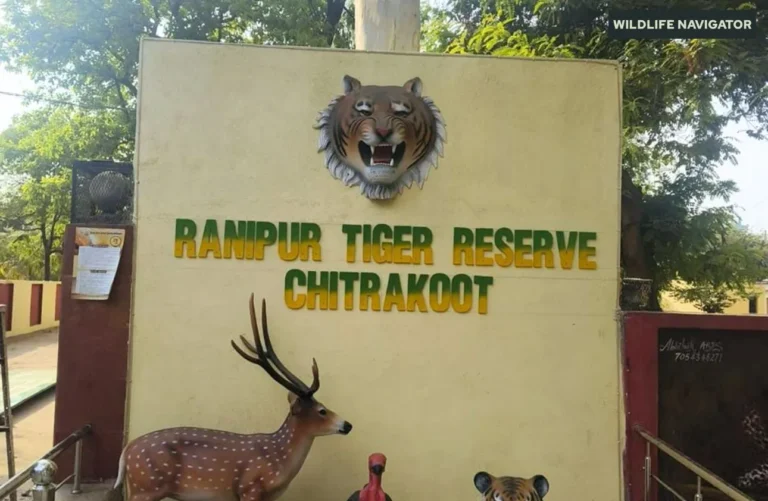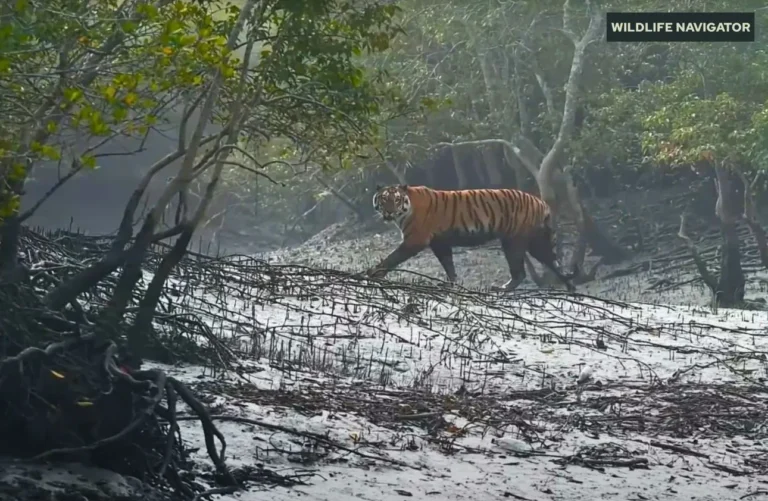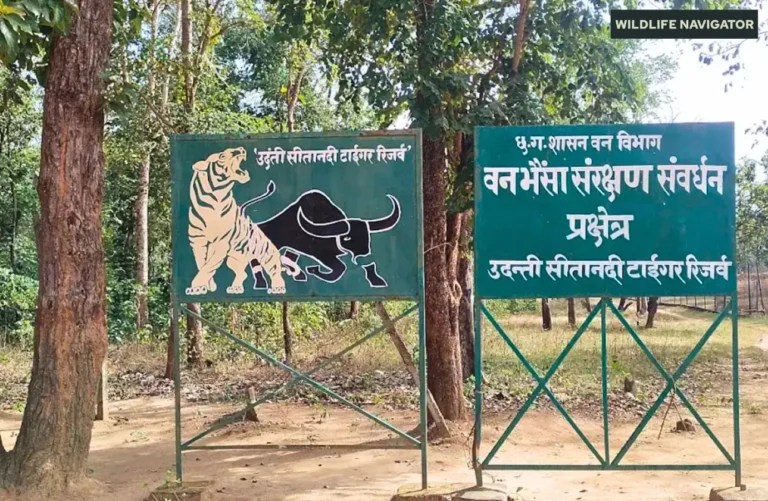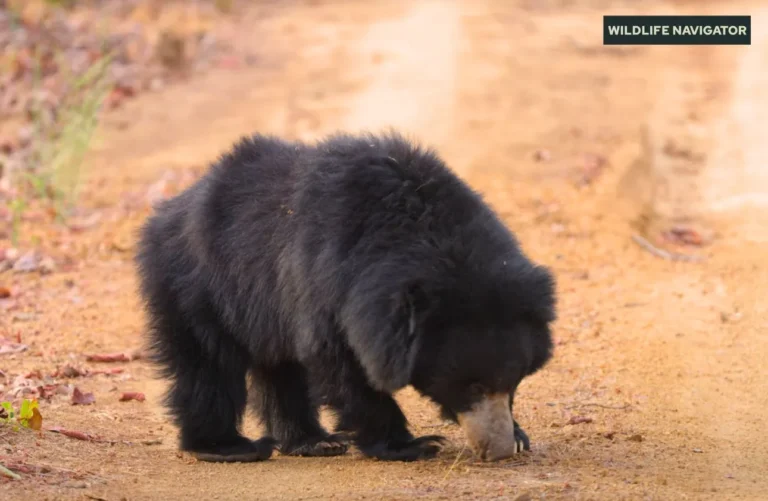Melghat Tiger Reserve: Exploring Maharashtra’s Wildlife Haven
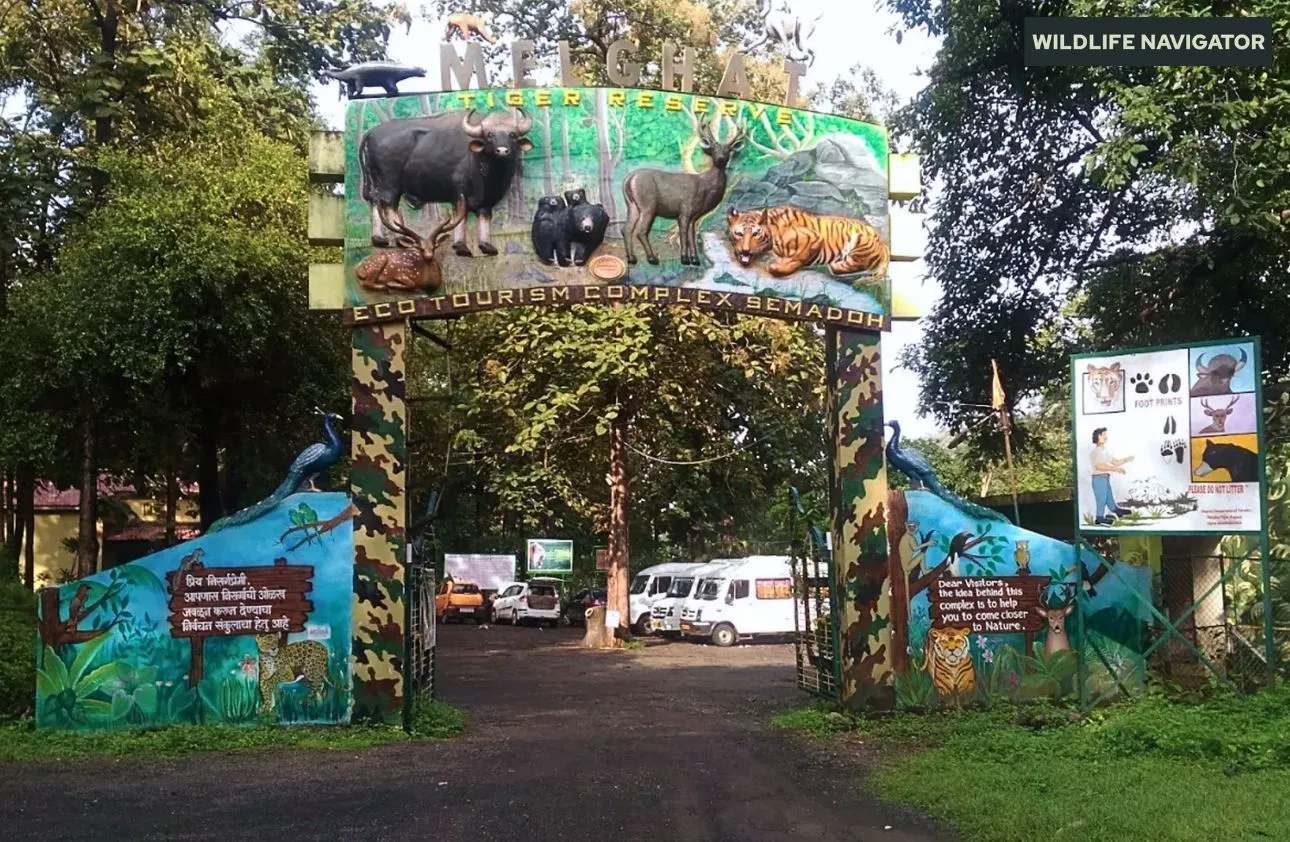
Melghat Tiger Reserve is one of Maharashtra’s most important wildlife conservation areas, known for its dense forests, rich biodiversity, and role in protecting India’s iconic tiger population. Spread across the Amravati and Akola districts in northern Maharashtra, the reserve forms part of the Satpura-Melghat landscape, which is a critical habitat for tigers, leopards, sloth bears, and numerous other species.
Declared a Tiger Reserve under Project Tiger, Melghat is not just a haven for wildlife but also a region steeped in history and local tribal culture. The reserve’s name, “Melghat,” comes from the Marathi words “Mel” (meeting) and “Ghat” (mountain pass), highlighting its terrain of connected forested hills and valleys. This unique combination of natural beauty, ecological importance, and cultural significance makes Melghat an attractive destination for wildlife enthusiasts, researchers, and eco-tourists.
History and Establishment
Melghat Tiger Reserve has a long and notable history in India’s wildlife conservation efforts. Initially declared as the Melghat Wildlife Sanctuary in 1974, it was later upgraded to a Tiger Reserve in 1991 under the prestigious Project Tiger initiative. This transition marked a significant step in safeguarding the region’s rich flora and fauna, especially its tiger population, which faced severe threats from habitat loss and poaching.
The reserve spans over 1,500 square kilometres and forms part of the larger Satpura-Melghat landscape, which plays a crucial role in maintaining ecological balance in central India. Melghat’s forests are primarily tropical dry deciduous, interspersed with teak and bamboo, providing ideal habitats for tigers, leopards, wild dogs, and various herbivores.
Being one of the pioneering tiger reserves in India, Melghat has served as a model for community-based conservation, involving local tribal populations in protecting wildlife and preventing human-animal conflicts. Over the years, ongoing monitoring, anti-poaching measures, and eco-development programs have contributed to stabilising the tiger population and maintaining the reserve’s biodiversity.
Location and How to Reach
Geography
Melghat Tiger Reserve is located in the northern part of Maharashtra, spanning the Amravati and Akola districts. It forms part of the Satpura-Melghat landscape, a network of forested hills and valleys that support a diverse range of wildlife. The reserve’s terrain is hilly with deep valleys, dense forests, and several rivers, including the Gawil and Sipna, which provide vital water sources for its flora and fauna. Its elevation varies from 500 to 1,050 meters above sea level, creating microclimates that sustain both tropical dry deciduous and semi-evergreen forests.
How to Reach
- By Road: Melghat is well-connected by road to nearby cities like Amravati (approx. 90 km) and Akola (approx. 120 km). Buses and taxis are available from major cities in Maharashtra.
- By Rail: The nearest railway stations are Amravati and Akola, both around 3–4 hours away from the reserve by road.
- By Air: The closest airport is Dr. Babasaheb Ambedkar International Airport in Nagpur, approximately 200 km away, followed by a road journey.
Travellers are advised to hire local guides or join organised tours for safaris and easier navigation within the reserve.
Flora and Fauna
Flora in Melghat Tiger Reserve
Melghat Tiger Reserve is predominantly covered with tropical dry deciduous forests, interspersed with teak, bamboo, and other hardwood species. The reserve’s forests provide food, shelter, and breeding grounds for numerous wildlife species. Key vegetation includes:
- Teak (Tectona grandis) – dominant in most forest areas
- Bamboo species – essential for smaller herbivores and habitat structure
- Mahua (Madhuca longifolia) – supports local wildlife and tribal communities
- Lantana and wild shrubs – found in open areas and clearings
The diversity in flora supports a healthy ecosystem, maintaining the balance between predators and prey.
Fauna
Melghat is home to a rich variety of mammals, birds, and reptiles. The reserve is best known for its tiger population, but it also shelters many other species. Notable fauna include:
Mammals
Melghat Tiger Reserve is home to a rich diversity of mammals, ranging from apex predators to smaller herbivores and nocturnal species. Key mammals include:
- Tiger: The flagship species of the reserve, crucial for maintaining ecological balance.
- Leopard: Adaptable predators often found in both core and buffer zones.
- Sloth Bear: Shy and nocturnal, feeding on termites, fruits, and honey.
- Indian Wild Dog (Dhole): Social pack hunters that roam in the buffer zones.
- Sambar Deer: Large herbivores that are a primary prey species for tigers and leopards.
- Chital (Spotted Deer): Commonly seen grazing in open forests and meadows.
- Gaur (Indian Bison): Massive herbivores, often in small herds.
- Langurs and Monkeys: Play a vital role in seed dispersal within the forests.
- Smaller mammals: Jungle cats, civets, porcupines, and pangolins, which contribute to biodiversity and ecological balance.
Birds
Melghat Tiger Reserve is a paradise for birdwatchers, hosting a variety of resident and migratory species. Notable birds include:
- Indian Peafowl – the national bird, commonly spotted in open areas
- Crested Serpent Eagle – a striking raptor often seen soaring above the forests
- Malabar Pied Hornbill – large, colourful, and easily recognisable
- Blue-faced Malkoha – a rare sighting in dense forests
- Pied Kingfisher, Woodpeckers, and Parakeets – frequent throughout the reserve
During migratory seasons, species like the painted stork and bar-headed goose can also be observed near water bodies.
Reptiles
Melghat is home to a variety of reptiles, which play a crucial role in the ecosystem:
- Indian Rock Python – non-venomous but large and impressive
- Monitor Lizards – commonly seen near water bodies
- Common Cobra and Russell’s Viper – venomous snakes, generally avoid human settlements
- Checkered Keelback and Rat Snake – harmless, often seen around forest edges
- Turtles and Terrapins – inhabit rivers and ponds within the reserve
This combination of dense forests and diverse fauna makes Melghat a key tiger reserve in India, providing a safe and thriving habitat for many endangered and rare species.
Tiger Population and Conservation Efforts
Tiger Population
As of the latest estimates, Melghat Tiger Reserve is home to approximately 73 tigers, according to WPSI. This figure reflects a steady increase from previous years, indicating the effectiveness of ongoing conservation strategies.
Conservation Initiatives
Melghat has been at the forefront of tiger conservation in India, implementing a range of strategies to protect its tiger population:
- Anti-Poaching Measures: The reserve has established a robust anti-poaching framework, including regular patrolling and the use of camera traps to monitor wildlife activities.
- Habitat Restoration: Efforts are underway to restore degraded habitats within the reserve, ensuring that tigers have access to suitable environments for hunting and breeding.
- Community Engagement: Local communities are actively involved in conservation efforts through awareness programs and participation in wildlife monitoring activities.
- Buffer Zone Management: Initiatives to manage and protect the buffer zones surrounding the reserve help mitigate human-wildlife conflicts and provide additional habitats for tigers.
These concerted efforts have not only contributed to the growth of the tiger population in Melghat but have also positioned the reserve as a model for tiger conservation in India.
Safari Experience and Entry Points
Safari Experience in Melghat Tiger Reserve
Melghat Tiger Reserve offers wildlife enthusiasts an immersive safari experience, allowing them to witness tigers, leopards, sloth bears, and a variety of other wildlife in their natural habitat. The safaris are mostly conducted in jeeps or vehicles provided by the forest department, accompanied by trained guides who provide insights into the flora, fauna, and conservation efforts.
- Jeep Safari: The most popular option, available in the core and buffer zones of the reserve. Safaris typically last 3–4 hours in the morning or late afternoon when animals are most active.
- Birdwatching Tours: For bird enthusiasts, specialised tours focus on spotting the reserve’s rich avian diversity, including migratory and endemic species.
- Photography Tours: Organised for wildlife photographers, these tours often start early in the morning to take advantage of natural light and animal activity.
Entry Points and Permits
- Primary Entry Gate: Chikhaldara, the main entry point to the core zone of the reserve.
- Other Entry Points: Anjneri and Achalpur gates provide access to buffer zones and lesser-explored areas.
- Permits & Fees: Safaris require prior booking through the forest department, and entry fees vary for Indian and foreign tourists. Advanced booking is recommended during peak season (November to April).
The guided safari experience in Melghat is a must for anyone keen to explore one of India’s most vibrant tiger habitats safely and responsibly.
Best Time to Visit
The ideal time to visit Melghat Tiger Reserve is between November and April, when the weather is pleasant and wildlife sightings are at their peak. During these months, the temperatures range from 15°C to 30°C, making safaris and trekking more comfortable.
- Winter (November–February): Cool mornings and clear skies provide excellent visibility for spotting tigers, leopards, and other wildlife.
- Early Summer (March–April): Wildlife activity increases around waterholes, offering great opportunities for photography.
The monsoon season (July–September) is generally avoided for visits, as heavy rainfall makes forest trails slippery, restricts safari movement, and increases the risk of leeches in the dense forests. Planning a trip during the recommended months ensures a safer and more rewarding wildlife experience.
Accommodation Options
Melghat Tiger Reserve offers a range of accommodation options for travellers, from forest rest houses to eco-lodges and nearby hotels. Staying close to the reserve enhances the wildlife experience and provides convenient access to safari routes.
Forest Rest Houses
- Managed by the Maharashtra Forest Department, these rest houses are located near the core and buffer zones.
- Basic facilities include clean rooms, attached bathrooms, and in some cases, dining areas.
- Booking can be done in advance through the forest department’s website or local offices.
Eco-Lodges and Resorts
- A few eco-lodges in Chikhaldara offer comfortable stays with modern amenities while maintaining eco-friendly practices.
- Some lodges organise guided wildlife tours, nature walks, and birdwatching sessions.
- Prices typically range from ₹2,500 to ₹5,000 per night for mid-range lodges.
Nearby Hotels
- Towns like Chikhaldara and Achalpur have budget and mid-range hotels for tourists who prefer staying outside the reserve.
- These hotels provide easy access to restaurants, local markets, and transport facilities.
Booking in advance is recommended, especially during peak tourist season (November to April), to ensure availability and a seamless wildlife experience.
Tips for Travellers
Visiting Melghat Tiger Reserve can be a rewarding experience if you plan carefully and follow essential guidelines.
- Safety First: Always follow the instructions of forest guides during safaris. Avoid venturing into the forest alone.
- Wildlife Etiquette: Maintain silence during wildlife spotting, do not feed animals, and keep a safe distance from all wildlife.
- Clothing and Gear: Wear neutral-colored clothing to blend with the surroundings. Carry hats, sunglasses, and binoculars for a better safari experience.
- Photography Tips: Use zoom lenses to capture wildlife safely. Avoid flash photography as it can disturb animals.
- Duration of Stay: A 2–3 day stay is recommended to explore core zones, enjoy safaris, and experience local culture.
- Health Precautions: Carry mosquito repellent, basic first-aid, and adequate drinking water.
Following these tips ensures a safe, enjoyable, and responsible visit, while supporting the conservation of the reserve’s precious wildlife.
Nearby Attractions
Melghat Tiger Reserve is surrounded by several attractions that allow visitors to explore both nature and local culture:
- Chikhaldara Plateau: Known for its scenic viewpoints, waterfalls, and lush greenery, this hill station is perfect for trekking and nature walks.
- Gawilgarh Fort: A historical fort offering panoramic views of the Satpura ranges and insight into the region’s heritage.
- Harisal and Anjaneri Waterfalls: Ideal spots for photography and relaxing amidst nature.
- Local Tribal Villages: Visitors can experience the culture, crafts, and traditional lifestyles of the local Gond and Korku tribes.
- Satpura Tiger Reserve (Nearby): For travellers on extended trips, combining Melghat with Satpura offers a broader tiger and wildlife experience.
Including these attractions in your itinerary can enhance your trip, making it a combination of wildlife adventure, cultural exploration, and natural beauty.
Conclusion
Melghat Tiger Reserve stands out as a vital conservation area, protecting tigers and a rich diversity of flora and fauna in Maharashtra. From dense forests and scenic hills to engaging safari experiences, the reserve offers wildlife enthusiasts a unique opportunity to connect with nature. Visiting responsibly, following safety guidelines, and supporting local communities ensures that Melghat remains a thriving habitat for its iconic wildlife. Whether you are a wildlife photographer, birdwatcher, or nature lover, Melghat promises an unforgettable experience, highlighting why it is one of the prominent tiger reserves in India.
